
Transit Briefs: NJT, SEPTA, WMATA
Written by Marybeth Luczak, Executive Editor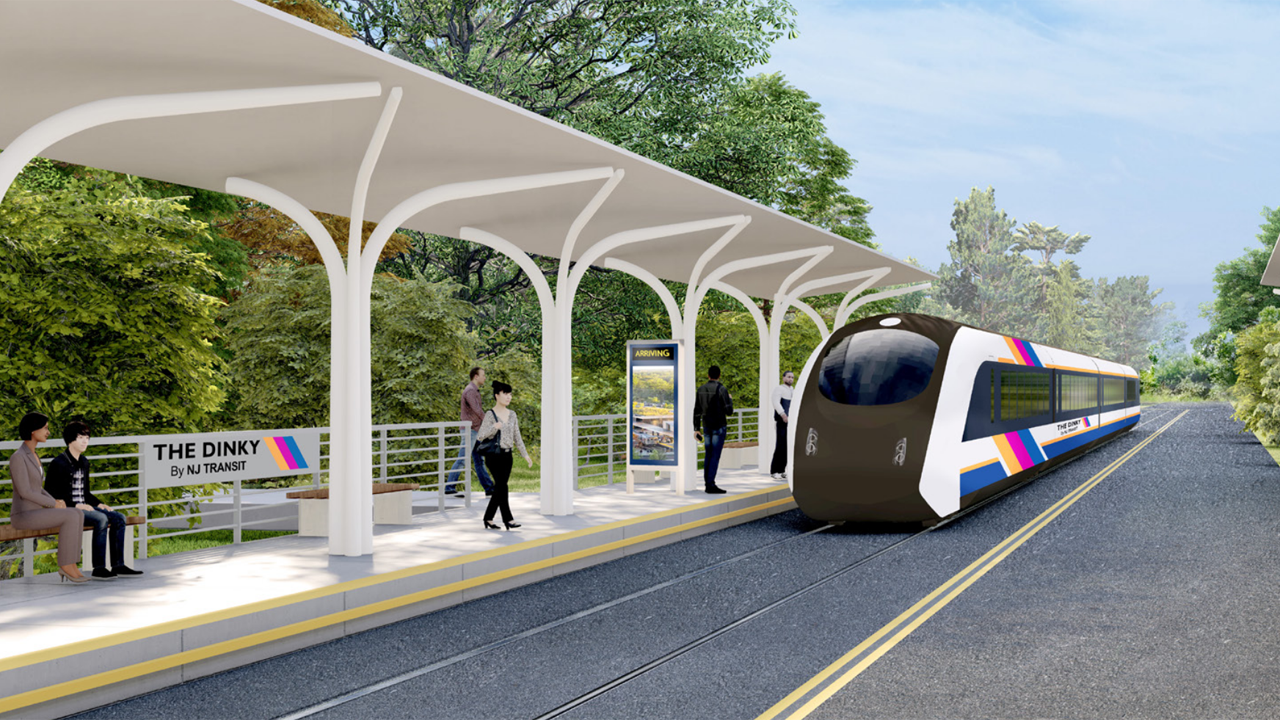
A New Jersey Transit study, released in November, found that a dedicated transit roadway with embedded light rail is the preferred alternative to current Princeton Junction commuter rail service. (Rendering Courtesy of NJT’s Princeton Transitway Study: Preliminary Concept Analysis.)
New Jersey Transit (NJT) has released a study of alternative transit modes for the Princeton Branch. Also, Pop-Up Metro is proposed to link Pennsylvania’s West Chester Borough to downtown Philadelphia; and Washington Metropolitan Area Transit Authority (WMATA) has released a proposed budget for the next fiscal year.
The Walkable Princeton blog on Nov. 30 reported that NJT released a study (above) of alternative transit modes for the 2.7-mile line between Princeton Junction (in West Windsor) and Princeton, where two-car Arrow III “Dinky” trains currently operate. “The study aimed to examine whether alternatives could provide a better service, and help accommodate future requirements for transportation and parking,” according to the blog.
NJT “recognizes the importance of both maintaining this connection and of developing new approaches to mobility in the corridor due to a variety of factors including aging [Arrow III commuter] rail vehicles, declining ridership, and new demands for travel following the COVID-19 pandemic,” according to the Princeton Transitway Study: Preliminary Concept Analysis, which was conducted by Stantec, with support from VHB, AmerCOM and Richard Grubb.
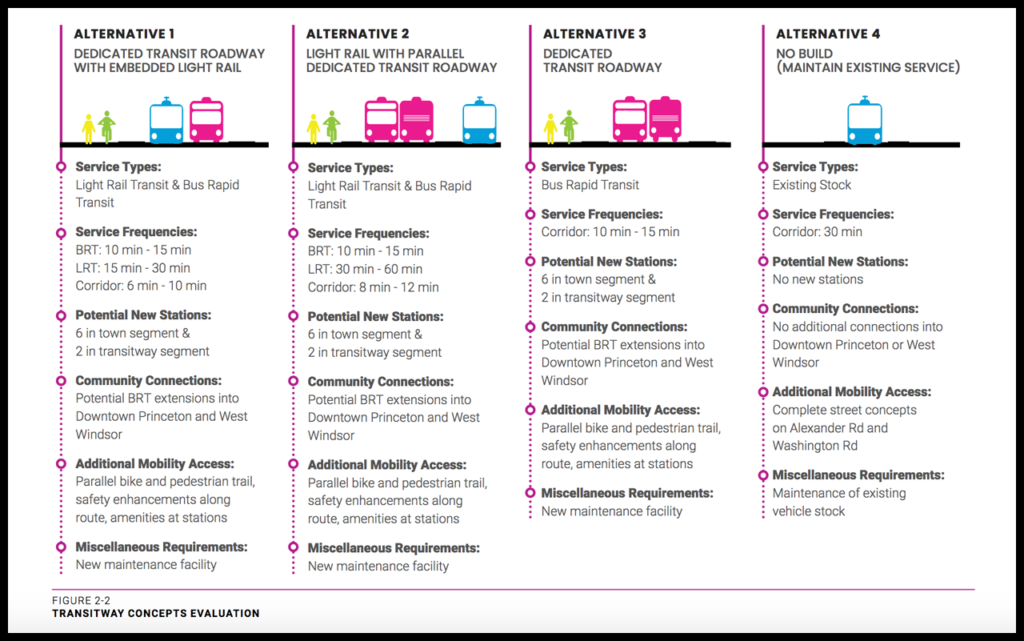
“In line with the preliminary study findings, released earlier this year,” NJT’s preferred alternative (Alternative 1) is to replace commuter rail with light rail, which it already operates between Trenton and Camden (RIVER Line) and in Hudson County (Hudson-Bergen Light Rail), the blog reported. New light rail “would run between the existing Princeton Station and Princeton Junction Station. … In addition to the light rail, buses on rubber tires would also use the Dinky right-of-way, alternating with the light rail. These buses would continue from Princeton Station into the town of Princeton, and north to the Princeton Shopping Center on North Harrison Street. A new protected bike-walk path would also be installed providing direct access between Princeton rail station and West Windsor.”
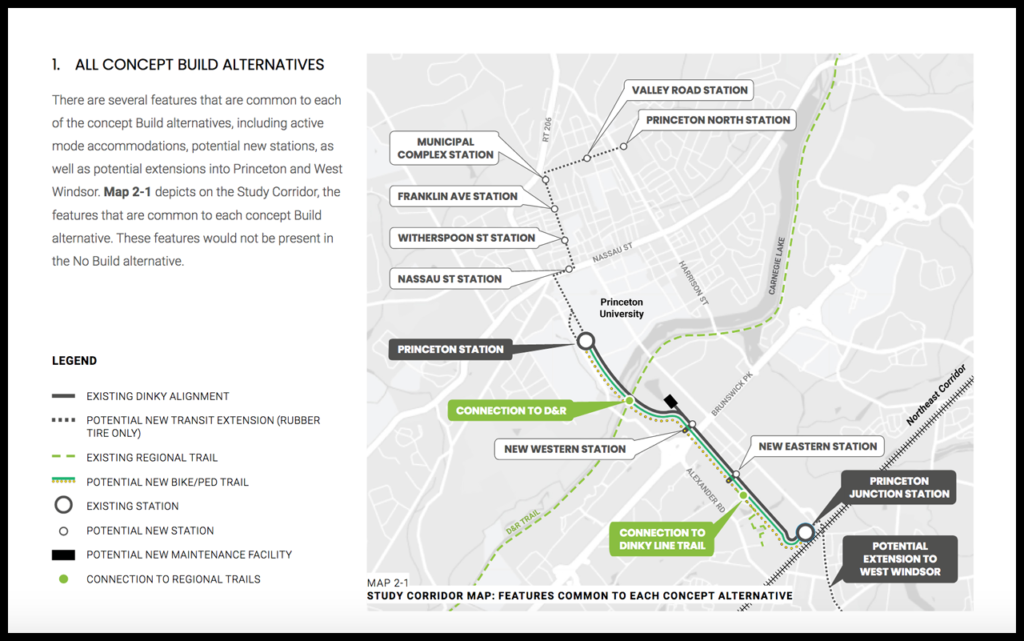
According to the study, “Alternative 1 would substantially enhance mobility and access to transit in Princeton and West Windsor, increase ridership, enhance active modes, and would minimize negative impacts to ROW [right-of-way], the environment, and historical and cultural resources.”
While the timing of subsequent study phases is not known, the next step would be to advance Alternative 1 to preliminary design and complete the required environmental documentation, either an Environmental Assessment or Environmental Impact Statement.
Line reconstruction costs are estimated at $100 million, according to Walkable Princeton, with the adjacent pedestrian/bikeway requiring an additional $45 million.
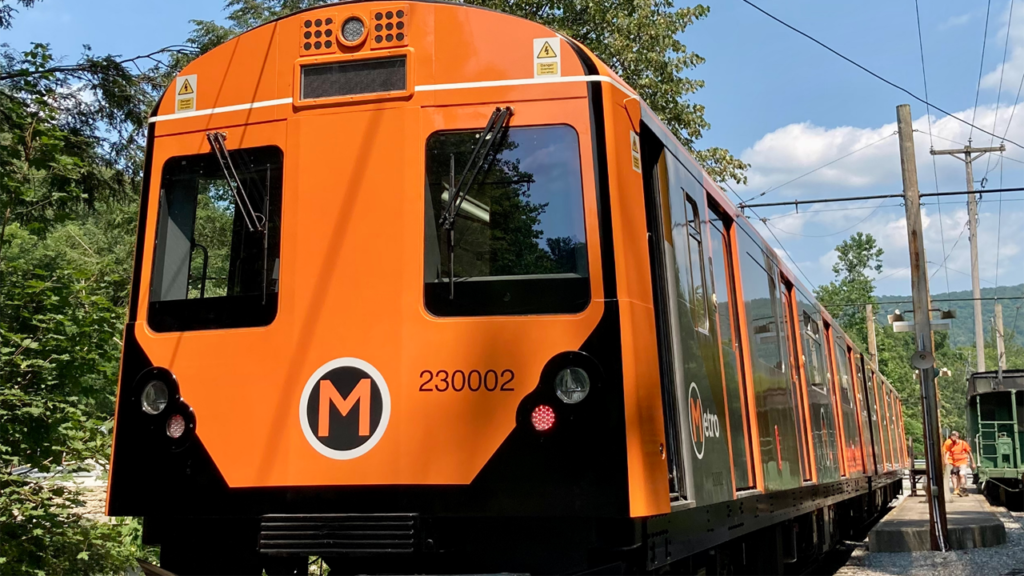
Exton, Pa.-based Daily Local News on Dec. 6 reported that the West Chester Borough Council passed a resolution in support of Southeastern Pennsylvania Transportation Authority (SEPTA) and Chester County studying an alternative rail link between the borough and downtown Philadelphia. According to the newspaper, the “borough rail committee has pitched plans for a $16 million West Chester Metro that is significantly less expensive than a conventional commuter/regional rail line,” and would make stops at West Chester, West Chester University, Westtown, Cheyney University and the new Wawa station, where riders could connect with existing SEPTA commuter trains to reach Center City. It would run on existing SEPTA right of way, according to the newspaper report, which noted that “[d]irect SEPTA commuter train service from West Chester to Center City ended in 1986 due in part to a lack of riders.”
While reestablishing commuter rail would cost at least $380 million, the Metro “would use one-of-a-kind and much cheaper battery-powered light rail Class 230 trains built by Pittsburgh-based Railroad Development Corp.,” Daily Local News reported. “The line would use recycled London Underground cars. Two-car shuttles would carry 194 passengers. Cutting-edge battery technology, with fast recharging and a 60-mile range is envisioned.”
According to the newspaper, a ride from West Chester to Wawa would take 12 minutes and there are plans for 21 daily round-trips.
The Pop-Up Metro kit from Railroad Development Corp. would be rented, minimizing upfront financial commitments, and would offer “flexibility and fast implementation not found in more conventional approaches,” according to T.R. Hickey, Delaware’s former state railroad administrator, who the newspaper said gave a presentation at a recent borough council meeting.
“Hickey noted that according to the committee, population along the West Chester Branch has grown 70% since the line’s 1986 closing, with West Chester experiencing rapid and dense redevelopment,” the Daily Local News reported. “Former suburban farmlands have been converted to residential subdivisions and enrollment at West Chester University is climbing. … The Delaware Valley Regional Planning Commission estimates that there would be 1,350 daily riders for the shuttle service.”
Included in the estimated $16 million start-up cost, the newspaper reported, is “$7.6 million for track restoration; $2.9 million for platform/parking restoration; $1.3 million for a Quonset hut-style temporary building to house train operations and maintenance activities; and $5 million for a two-year leased train and boarding ramps.”
For more on Railroad Development Corp.’s Pop-Up Metro, read “CMU’s Posner Lays Track for Future of Rail Transit.”
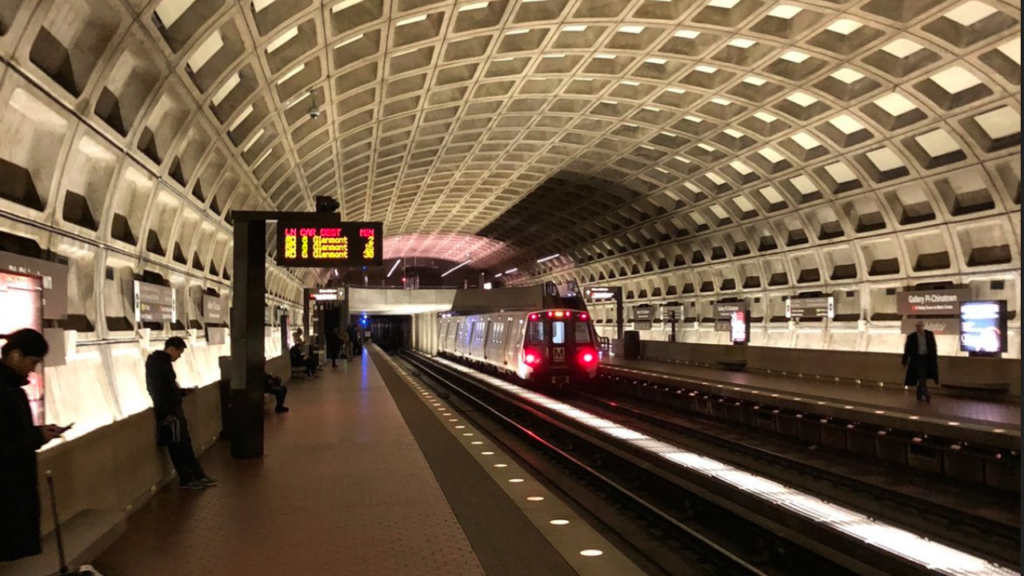
The Washington Post on Dec. 6 reported that WMATA released a $2.3 billion budget plan for the fiscal year beginning July 1 that “avoids layoffs or significant service reductions with the help of federal infrastructure money that transit officials say can insulate” it for at least one year.
“Riders would see a roughly 5% fare increase, on average, while the maximum fare would increase to $6.50, up from $6,” according to the newspaper. WMATA “officials say the increases are part of the transit agency’s attempt at simplifying its complex fare structure. The agency also plans to drop its peak-fare designation during rush hours and is seeking the return of” automated train operation.
“Customers want more frequent service, and we found that when frequency improves, more people ride and people ride more often,” the Post quoted WMATA General Manager Randy Clarke as saying. “Doubling service frequency, we expect, will generate additional ridership for Metro [WMATA] and improve access for our customers in the region.”
While the plan would mostly restore pre-pandemic rail service, it would cease Yellow Line operations north of Mount Vernon Square at stations also served by the Green Line, according to The Washington Post.
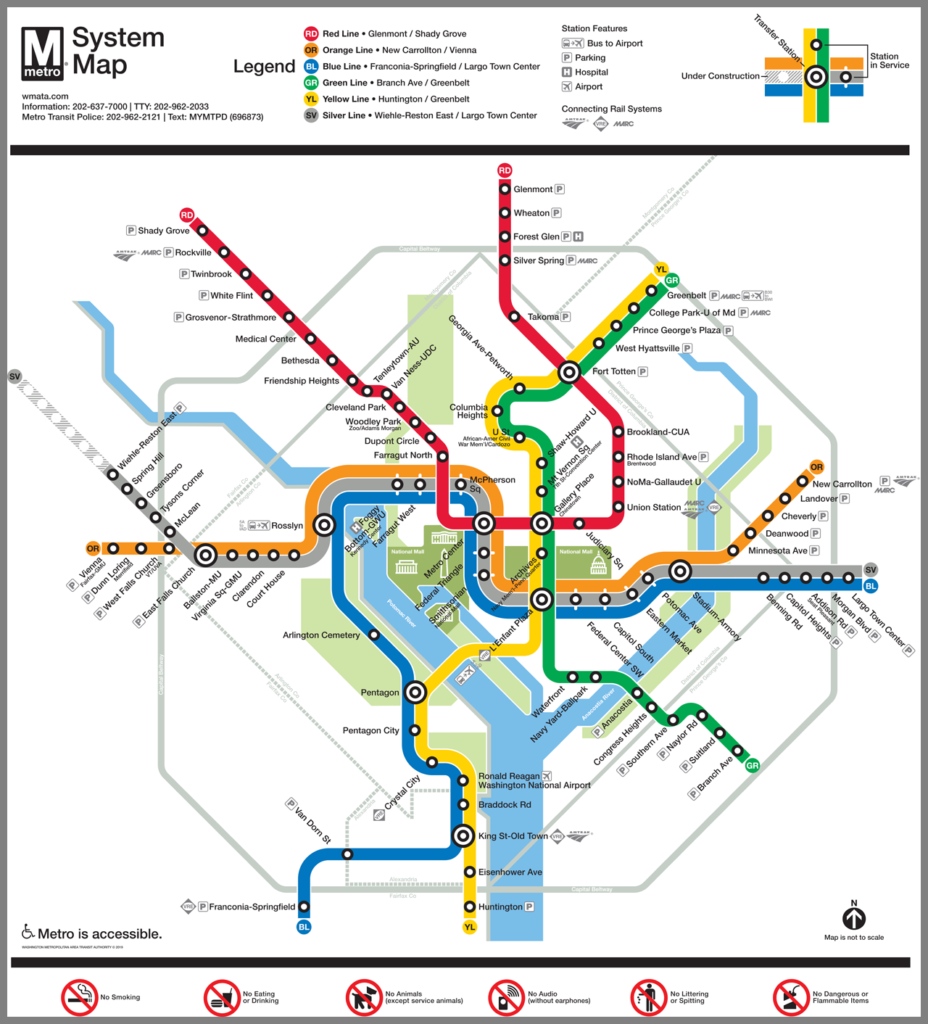
“The transit system is projecting to spend 3.3% more than in the current fiscal year, mostly to support [workforce] salaries and benefits,” the newspaper reported. “The budget includes a $561 million infusion from the federal government, the final chunk of pandemic aid available to substitute for lost fare revenue.” WMATA “is proposing to bridge a remaining $185 million gap primarily with $139 million from the infrastructure law. Other sources include fare revenue the transit agency expects will outpace earlier projections, eliminating some vacant positions, reducing redundant expenses (such as multiple call centers) and revenue growth from advertising.
“Infrastructure money is intended to be used for Metro’s capital budget—which funds construction projects, vehicle replacements and other non-service expenses—but for one year, the transit agency plans to shift the money to its operating budget to fund preventive maintenance.”
Additionally, WMATA is proposing a fare cut for low-income riders. “This is a big deal for this agency,” the newspaper quoted Clarke as saying. “It’s us stepping up and saying as a societal goal, ‘How do we make sure those that need transit access the most have not only a great availability of service, but that it’s really, really affordable.’”
The agency “also wants to narrow the cost difference between Metrobus and the more expensive rail system on shorter trips in the hope of luring more riders to Metrorail,” and “to raise a distance-base charge levied when rail riders travel beyond three miles.”
According to The Washington Post, WMATA is expected to net $7.1 million from the fare increase “after taking into account the discounts for lower-income riders. Transit officials say they expect the changes would result in nearly 2 million more passenger trips during the year. Metro would continue to charge a flat $2 fee for weekend rides and weekday rides after 9:30 p.m.”
According to the Post, WMATA’s service plan includes a return to automated train operation, which was eliminated after “a 2009 collision between a moving Red Line train and another train that had stopped near the Fort Totten station. Eight passengers and a train operator died, making it the deadliest incident in Metro [WMATA] history.” While automated train operation was “not found to have contributed to the crash, Metro leaders decided to switch to manual” operation.
Clarke said a “train operator would remain in the cab for monitoring and emergencies,” according to the newspaper, which noted it is “not clear if the change would decrease Metro’s personnel costs. Clarke said he also believes a shift … would increase safety and improve service. Since about 2018, Metro has been restoring and updating the infrastructure needed to run the automatic system. Transit officials this week said tests on the Red Line are complete.”
WMATA would need the Washington Metrorail Safety Commission’s approval for the move, and if granted, it plans to start automated train operation “on the Red Line in spring with a goal of converting the entire system by the end of the year.”
The budget plan will be reviewed by the WMATA Board, with public hearings to be held early next year; a final vote is anticipated in March, according to the newspaper.
In related developments, WMATA on Nov. 15 launched its new Silver Line extension.



